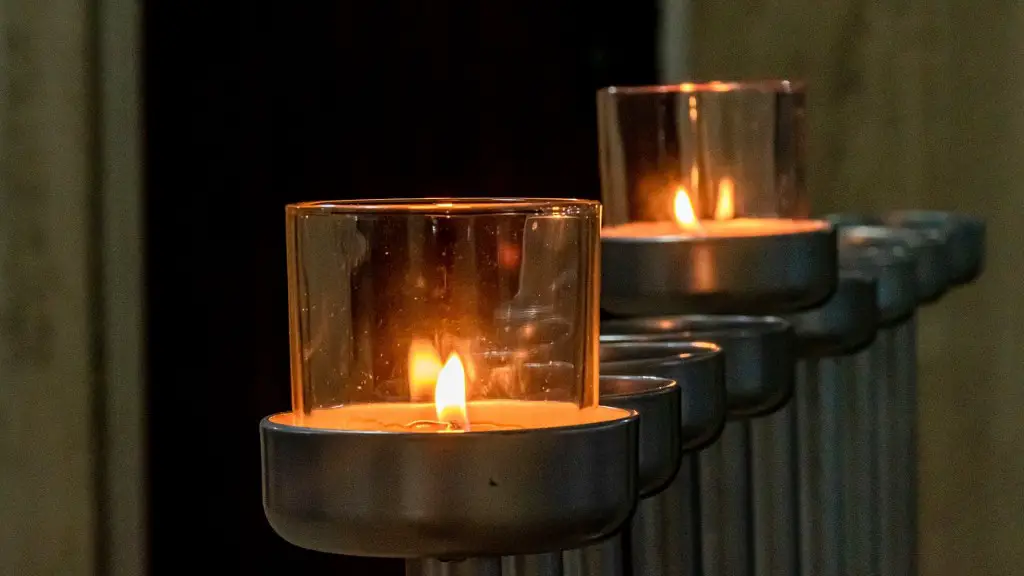History of Passover
Passover is a major Jewish holiday that is celebrated for eight days and usually occurs in the Spring. It is an essential religious observance in Judaism, which marks the emancipation of the Israelite slaves from Egypt about 3,300 years ago. Passover celebrates the Exodus story and commemorates the liberation of the Hebrew people from slavery in Egypt. According to the Book of Exodus, God instructed Moses and the Hebrews to eat a special meal of unleavened bread and bitter herbs as part of the festival. This special meal is known as the Seder, and is still celebrated today by many Jews around the world. The Passover Seder includes readings of the Haggadah, a text that begins with an account of the Exodus and includes prayers, blessings, rituals, and declarations of faith that have been passed down through generations.
Significance of Passover
For Jews, the observance of Passover is an important reminder of the freedom they have gained over the centuries, as well as their commitment to justice, faith, and Divine guidance. Passover also serves as a reminder of the power of God to free people from oppression and bring them to redemption. By engaging in meaningful activities such as singing and discussing the stories of Passover during the Seder, participants are able to learn about the Exodus and reflect on their own faith and their responsibility to work for social justice.
Symbology of Passover
In Passover, the symbols represent important aspects of the holiday and the holiday’s symbolic meaning. Matzah, or unleavened bread, serves as a reminder of the Israelites’ hurried departure from Egypt and the lack of time they had to let their dough rise. Wine is offered to celebrate joy and freedom, while the bitter herbs (or horseradish) represent the Israelites’ suffering. Charoset, a sweet mixture of apples, cinnamon, nuts, and wine, serves as a reminder of the mortar and bricks the Israelites had to make in slavery. Finally, a roasted egg serves as a symbol of mourning, sacrifice and rebirth. These symbols are shared during the Seder, and the telling of the Exodus story, to emphasize the significance of the holiday and the importance of freedom.
Observance of Passover
During Passover, Jews refrain from eating bread and other leavened products, such as cake, doughnuts, crackers, and pretzels. For the eight days of Passover, they replace these foods with unleavened items known as “matzah.” Additionally, during the seder, Jews also abstain from all activities that directly or indirectly involve “work.” This includes such everyday activities as writing and using electrical devices, cooking, as well as certain religious activities, such as praying with a prayer book or carrying items from one domain to another domain.
Rituals
During the seder, Jews observe a number of rituals designed to help them remember the events and the importance of their heritage. Some of these include hiding a piece of matzah, known as the Afikomen, and searching for it later during the service; breaking a middle matzah in half as a reminder of the sacred significance of this food; and dipping a vegetable into salt water as a reminder of the tears and suffering of the Israelites. These rituals are enacted to remind participants of their responsibilities to remember their history, cherish freedom, and pursue justice.
Conclusion and Future
Today, Jews remember the Exodus story by celebrating Passover in homes around the world. The rituals and traditions of the seder provide a meaningful way to connect contemporary participants to their ancient history, and to forge new connections within the Jewish community. Passover affords an opportunity to express spiritual beliefs, and to recognize the importance of faith and freedom in the lives of all people. Passover continues to serve as a powerful reminder to work for justice and help those who face oppression and suffering.
Impact on the Jewish People
Because of the importance of Passover and its message of justice and freedom, the observance of Passover has become a significant part of Jewish life. Jews around the world take part in the holiday to remember not just the liberation of Jews from slavery in Egypt, but to be reminded of the ongoing struggles throughout history to obtain freedom and justice. Passover also serves as a reminder of the resilience of the Jewish people and the strength of their faith. For many Jews, the rituals associated with Seder offer a powerful reminder of their heritage and the importance of justice and compassion in their lives.
Symbols of Hope
To Jews, the observance of Passover is a source of hope and joy. Through the story of the Exodus and the celebration of the Seder meal, Jews are reminded of the power of faith in the face of oppression. The ritual of searching for the Afikomen and the tradition of eating the bitter herbs serves as a reminder of the suffering endured by the Israelites in Egypt. Yet, Passover is ultimately a festival of freedom, reminding Jews that with faith, courage, and hope, they can overcome any challenge.
Inclusion
Passover is a communal celebration that includes families and friends in the observance. Jews often invite those outside of their families or communities to join in on the rituals and share in the celebration. By including people of all backgrounds and beliefs, Passover is a reminder to Jews of our obligation to demonstrate universal compassion and work towards healing divisions. This sense of community is also exemplified through the annual tradition of exchanging Passover greetings, as a way of expressing joy and hope for the future.
Passover in Today’s World
The rituals of Passover remain relevant for Jews today, and are a powerful reminder of the struggle for freedom and justice throughout history. Passover provides an opportunity to reflect on the importance of faith and resilience, as well as a call to action to work for justice, respect, and peace. As Jews continue to celebrate Passover, both in memories of the past and for the future, the holiday will continue to remind us of our shared history and the need for justice and hope.

